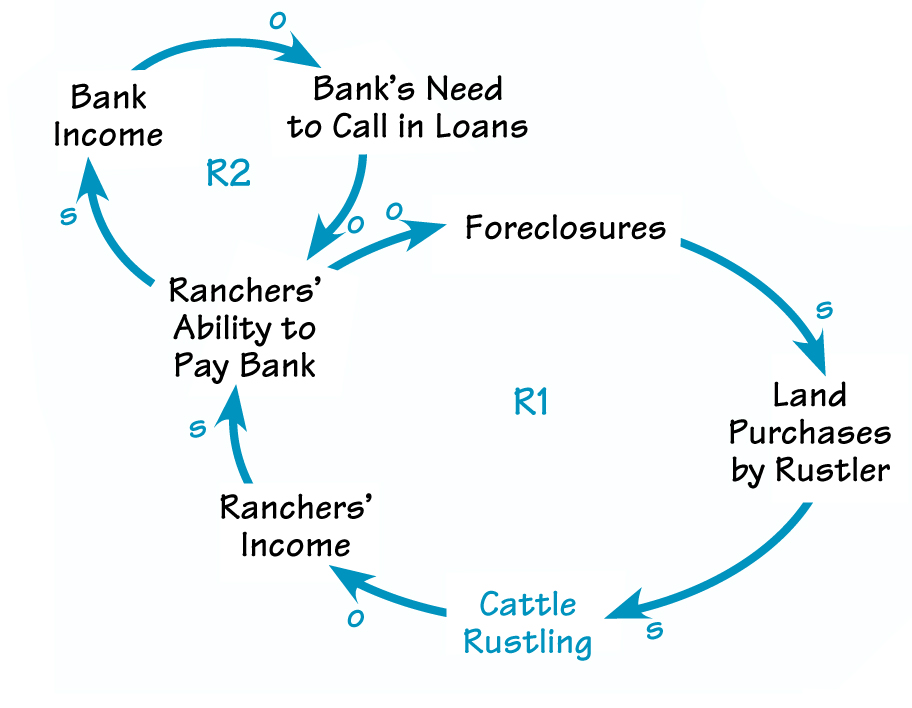Examples of feedback loops in action crop up in the most unlikely places. In Disney’s last handdrawn animated motion picture, the recently released Home on the Range, a zany cast of characters is trapped in a vicious cycle of which cattle rustler Alameda Slim is the only beneficiary. Slim is intent on owning all the land in the state, including a small dairy farm called “Patch of Heaven.” He uses his unique ability to woo cows through hypnotic yodeling to strip ranches of their cattle. Without a source of income, the ranchers are unable to pay their mortgages.
Vicious Cycle of Foreclosures

Meanwhile, with all of the defaulted loans, the banks are in trouble and must call in the ranchers’ loans. When the ranchers can’t come up with the money, the bank forecloses and puts the property up for auction. Slim, disguised as an upstanding landowner, then buys the properties for a song and continues his rustling ways.
When Alice, owner of “Patch of Heaven,” is forced to come up with $750 to pay off her loan, it looks as though all is lost for her and her menagerie. But three enterprising cows—Maggie, Grace, and Mrs. Caloway—manage to put an end to Slim’s nefarious deeds by capturing him and using the reward money to pay off Alice’s bank debt. Three cheers for bovine ingenuity!
—Janice Molloy
YOUR LOOPS HERE!
Mapping out the dynamic behavior in a situation is a skill and, like any other ability (including speaking Japanese, ice skating, or creating a soufflé), it requires practice. To give you an opportunity to exercise your systems thinking “muscles,” we periodically publish a “Systems Thinking Workout Challenge.” The challenge is a scenario usually based on an article from the popular media that includes some interesting dynamics. We encourage you to read the write-up, identify the key variables, and create causal loop diagrams, stock and flow diagrams, or behavior over time graphs that depict the feedback processes at work.
So, stretch out and start flexing those ST muscles—today!
